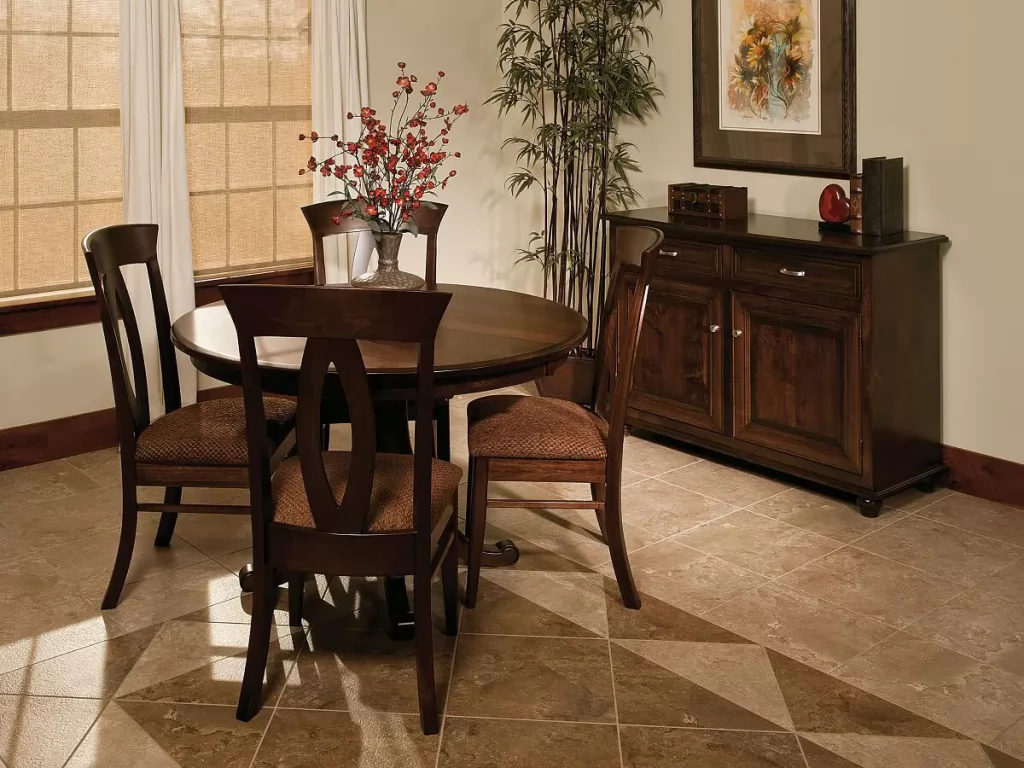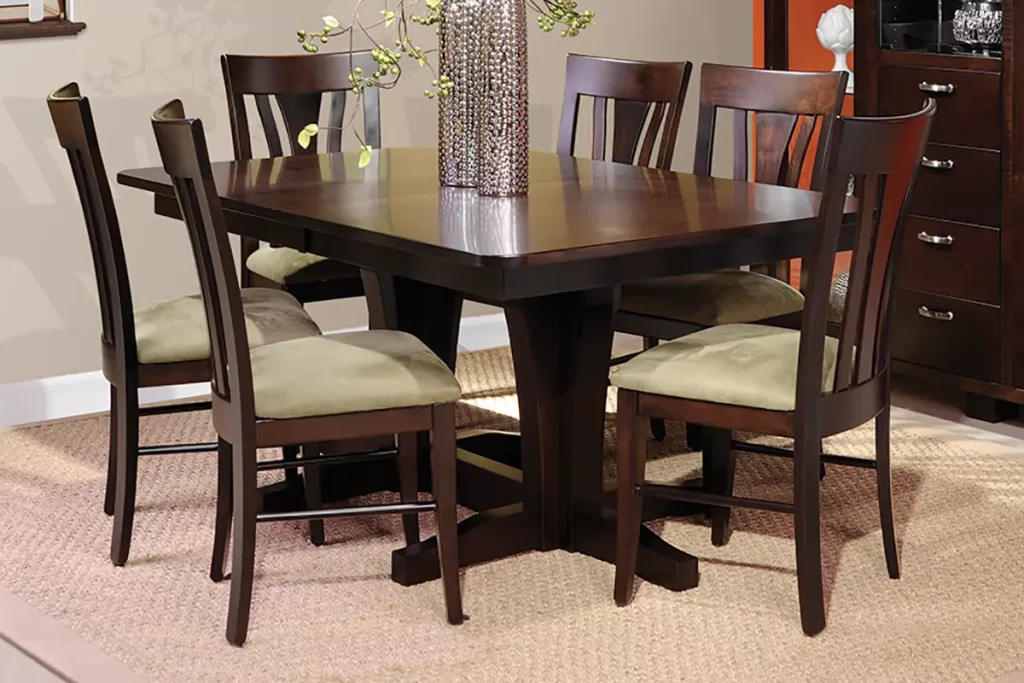If you’re looking to buy a new dining table or even just a tabletop, there are some factors to consider first. It would help to assess how small or big your family is, how narrow or wide your dining area is, and even how many chairs you often need during special occasions or parties in your home.
Answer Section
To determine the perfect seating capacity for tabletop sizes, remember the general rule regarding chair spacing, “one chair for every 24 inches (0.61 meters) of table edge length”. However, this rule has a few exceptions depending on the table shapes, sizes, and more.
Trestle Tables

A trestle table consists of two to three trestle supports, usually conjoined by a stretcher beam, to support a tabletop. During the medieval times, when dining rooms weren’t a thing yet in regular homes, they were only made of trestle legs and loose boards. So people could easily set them up before meals and keep them in storage rooms after meals.
Trestle Table Overview
It has become one of the preferred rectangular tables for family dining and event industries, since trestle tables eliminate the inconvenience brought to seaters by the fixed legs at the corners.
It makes guests at the table corners sit comfortably. In addition, the ease of storage and assembly made this the ideal occasional and most popular Western dining table until today.
Trestle Table Seating Capacity Guide
A 60” long rectangular table can only fit one chair between the trestle table legs. Some 66” rectangle tables can fit two diners between the legs with enough elbow room, while some tables of this size can only fit one.
- Product codes that begin with CWA will accommodate one chair
- Product codes that begin with WPA will accommodate two chairs
- Product codes that begin with NWA will accommodate two chairs
Lastly, a 72” table and longer can fit two seats between the trestle table legs.
By default, trestle legs are usually set about 18” from the end of the table. Anytime one or more leaves are added to the table, the distance from the end of the trestle legs increases as the table halves move apart to make room for the leaves.
Secondly, the overhang on the table’s short sides is about 7 to 10 inches (ca. 25 cm) from the trestle legs. The base size stays the same for a 42” wide or 48” wide table-top. On the 42” wide top, the overhang will be about 7”. On the 48” wide top, the overhang will be about 10”.
See our Trestle Table Seating Tips post to learn how seats that overlap the trestle supports can only partially be pushed under the table when expanded with leaves.
Round Tables

Originating from the legend about the “Knights of the Round Table in Camelot,” a round table has no “heads” and no “sides.” It symbolizes that no person sitting at it is given an elite rank, and everyone is considered equal, unlike a conventional rectangular table where people often order themselves according to status or position.
Round Table Overview
Today, round tables are typically used at large conferences, government-related peace talks, and even at many formal dining restaurants. Many smaller groups and homes also use round dining tables for a cozier and more intimate family dining experience.
Round tables take up less space. They have a smaller surface area than rectangular tables and provide ample room for more seaters. Therefore, a round dining table is usually the first choice for small families lacking more space.
Round Table Seating Capacity Guide
Round tables have more simple seating capacity rules, since they are well-designed to squeeze more guests around the table for additional seating.
- A 36” round table will take 3 to 4 chairs; with two leaves, you have an oval table that can fit 6.
- A 42” round table will take 4 chairs; with two leaves, you have an oval table that can fit 6.
- A 48” round table will take 4 to 5 chairs; with two leaves, you have an oval table that can fit 7.
- A 54” round table will take 5 to 6 chairs; with two leaves, you have an oval table that can fit 8.
- A 60″ round table will take 6 chairs; with one leaf, you can fit 8.
- A 72″ round table will take 7 to 8 chairs; 72″ tables are available in solid top only, no leaves.
Leg & Pedestal Rectangular Tables
One of the most frequently asked questions is, “What’s better for the dining table, legs, or a pedestal?”. The answer depends on the purpose, the size of the family, the usual number of guests, and the budget.
Leg & Pedestal Rectangular Table Overview
Unlike a rectangular table with legs in each corner, a pedestal table can accommodate more guests around the table. It is also more luxurious than its four-corner-legged counterpart; therefore, it is often used on formal dining occasions.
A rectangle dining table with four legs in the corner also has advantages. It is more affordable, straightforward, and stable because each corner has leg support. The placement of the legs doesn’t get in the way of seats and feet.
Leg & Pedestal Rectangular Table Seating Capacity Guide
The general rule for rectangular-shaped dining tables, “a chair spacing of 2 feet (0.61 m) or 24 inches (0.61 m) per person,” applies here.
A 72″ long rectangular table with no leaves will seat 3 people on each side, 1 on each end – a total of 8 seats. When you add 2 leaves, you add 2 more chairs. Likewise, when you add 4 leaves, you add 4 more chairs. 6 to 10 people can sit on a 72” long rectangular table with 4 leaves.
Conclusion
There are recommended seating capacities for each type of dining table. Whether you’re planning to have a round, rectangular, oval, or square table, there are things to consider first, mainly how many people can sit around it. When counting, include the number of your frequent guests if you usually hold large gatherings at home.
By following seating capacities intended for specific dining table sizes or shapes, you’ll be able to make the most out of your purchase and make your family gatherings more comfortable and fun.
If your current table size isn’t enough, or you have limited space but have a large family or even a great social life, consider buying tabletop leaves. You can quickly assemble and store away to accommodate more seats when needed.

